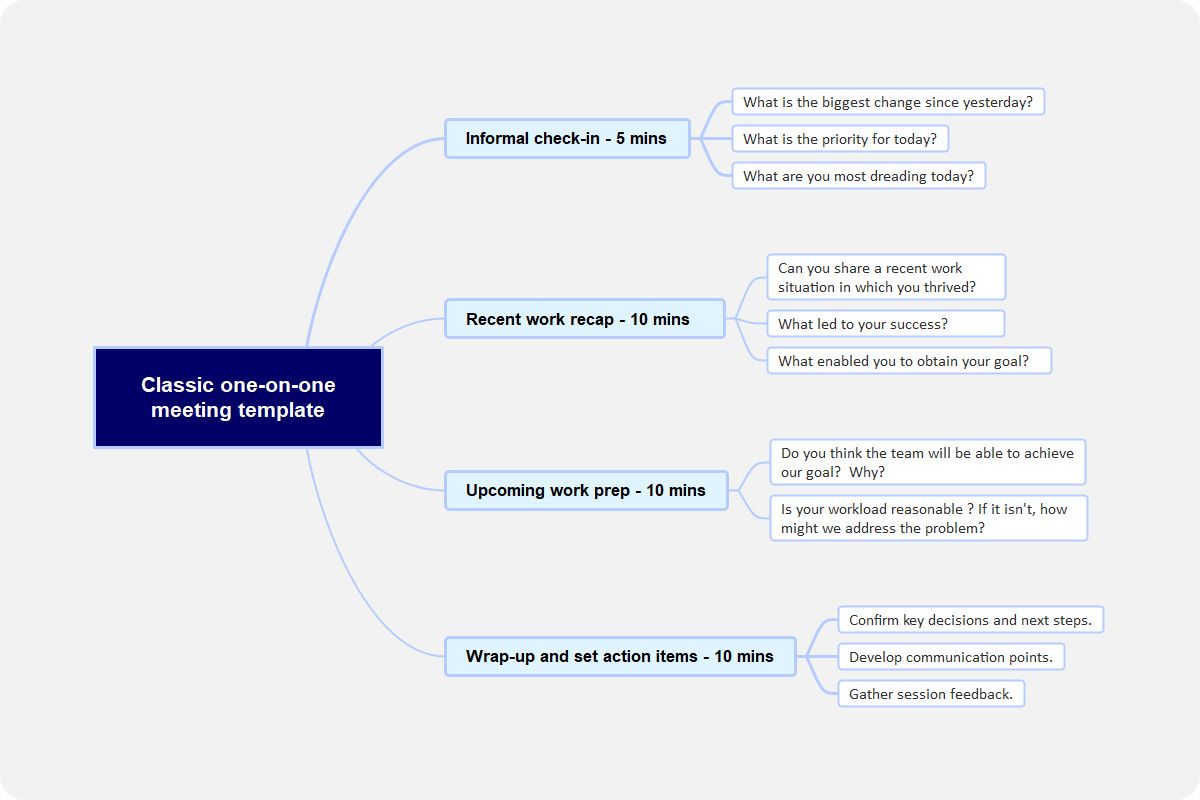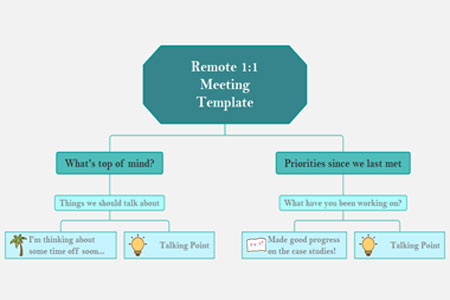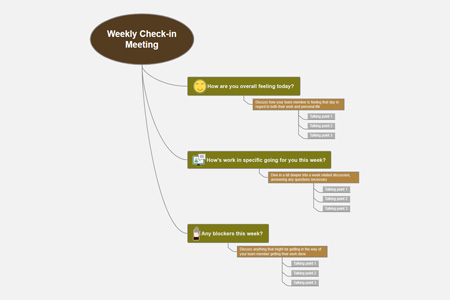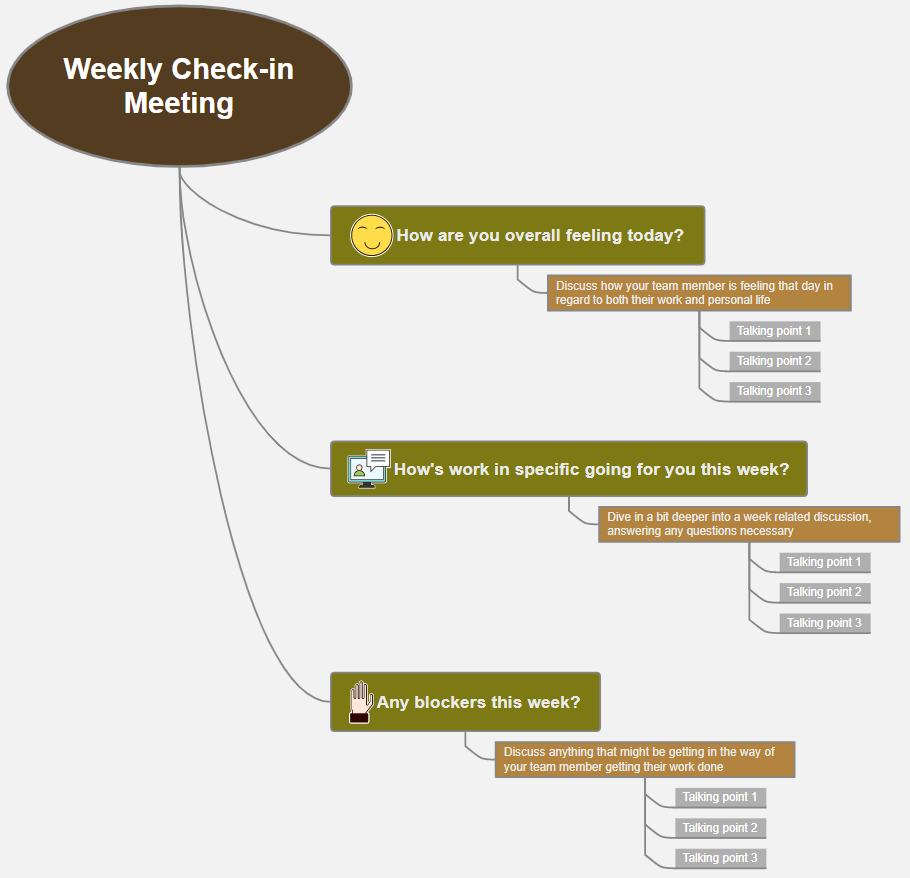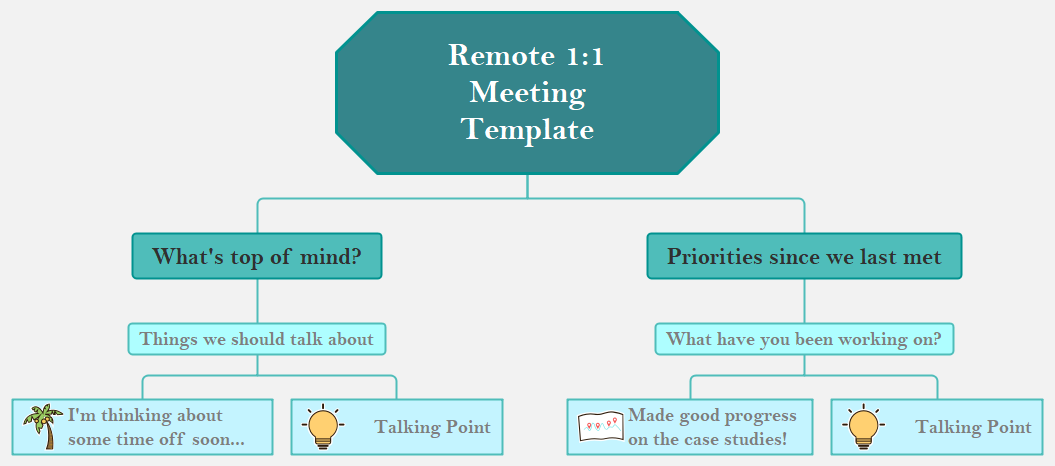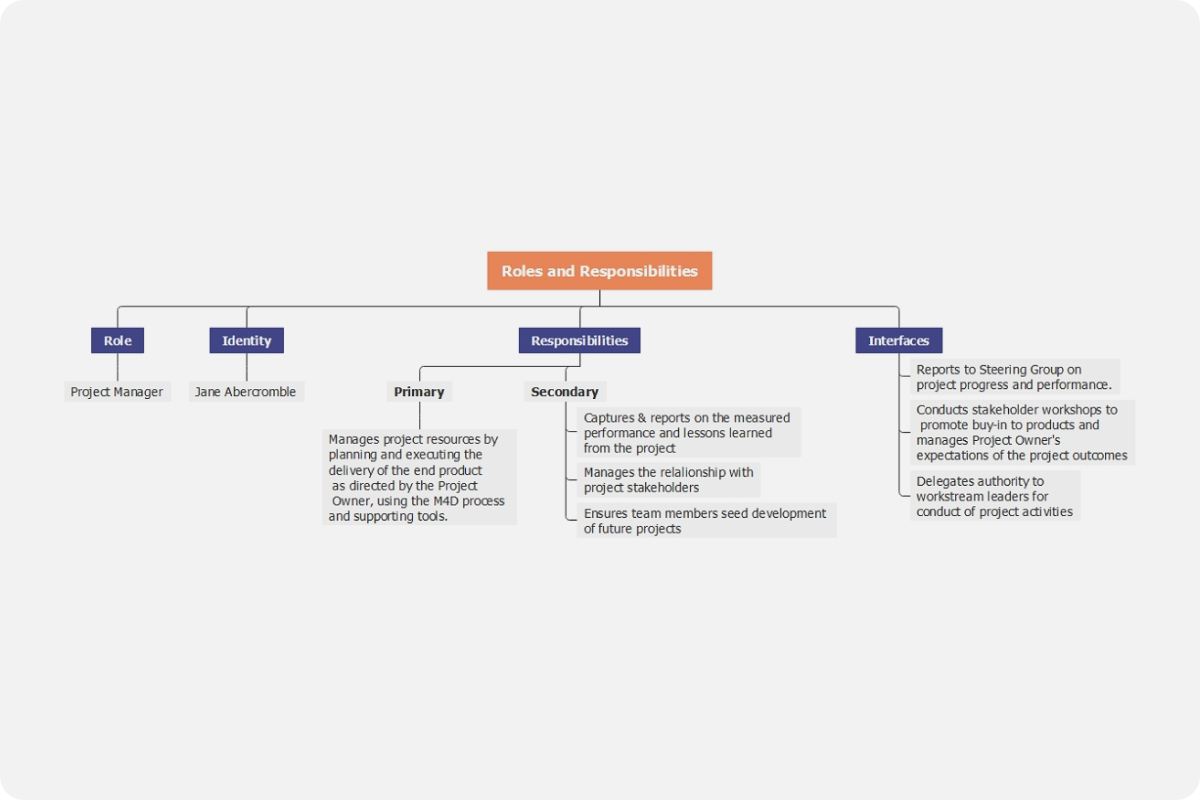About the One-on-One Meeting Template
What is a one-on-one meeting?
One-on-one meetings are designated spaces on the calendar and in one's mental map for anticipated and open-ended conversations between an employee and a manager. Unlike tactical meetings and status reports, this kind of meeting is meant for mentorship, coaching, venting, and giving context. It goes beyond the open door policy and designates time on a regular basis for leaders and teammates to communicate and connect.
The employee-focused and free-form nature of this meeting that goes beyond updating status is what makes one-on-one meetings special. It is considered the most crucial meeting one can have because it provides the foundation for a productive and trusting work relationship.
The primary purpose of one-on-one meetings is to connect and make space with employees. It is the best avenue to guide and help them progress with their job and overall career growth. More importantly, during this meeting, you can provide feedback, recognition, and praise. This is also the time to raise any issues or potential hurdles the employee has. Lastly, one-on-one meetings nurture teamwork and define the next steps toward achieving company and personal goals.
Why have a one-on-one meeting?
Conducting a one-on-one meeting yields positive results to employees, managers, and the company.
- For Employees
As an employee, these kinds of meetings allow you to get the feedback and guidance you need to succeed in your role and have career and personal growth. At the same time, upon listening to you and providing timely advice, your manager gets to be your partner in your success Additionally, for employees, one-on-one meetings assure you that you are valued, not just your effort but your presence and contribution to the organization. It also gives you the sense of safety of knowing where you are, based on constant feedback from your team leader or manager. If things need to be corrected on how you do something, you will surely know about it and eventually fix it in time. Finally, this kind of meeting allows you to bring up the challenges and difficulties, especially during busy days.
- For Managers
As managers conduct one-on-one meetings, they help their team members' development, improve employee retention, and resolve underlying issues. For managers to see the potential of their employees, they have to engage with each of them. You cannot take shortcuts when it comes to building rapport and connections with employees. Dedicated one-on-one meetings also create space to build trust and ensure that you are in the loop of the whereabouts of your members, being an employee and as a person as well. With this, you, as a manager, take actions to keep them productive and happy at work.
In return, you can also get feedback from your team members to grow and improve as a manager. You can also talk to your employees on how to better support them and information on what is expected of you as a manager and how to improve professionally.
- For the company
The effort of managers exerted to connect with team members can make or break the company's future. A one-on-one meeting is not only beneficial for managers and employees; more importantly, it also affects your business. When every employee has the chance to know the company's plans and where it is heading, they will feel more responsible and accountable, resulting in more investment in the company. Remember that engagement is a popular indicator of productivity and retention.
How do you structure a one-on-one meeting?
Most companies have a default structure on how to go about one-on-one meetings. But how is a one-on-one meeting template made? Here are five essential steps that you must consider.
- To run an effective meeting, you first need to create a plan. You do not need to follow what is in the program, but it can help to provide a series of goals, questions, discussion topics, and action items. Bullet points will work well to keep them straightforward and easy to read.
- It is proper to set the mood and build rapport and connection before diving into the discussion. This exercise is essential as you can develop empathy and align expectations towards the other person. It will also help you understand their current needs.
- You can start by talking about things in the present moment. Discuss what's going well and move on to discuss any setbacks or frustrations.
- After the quick retrospective, you can discuss strategies for professional growth. Think of this step as a chance to initiate new projects and try new things and ideas.
- As this is a free-form conversation, you can allow each side to say anything they want. This does not have to be so formal, and you can talk about things revolving around business trends and new learnings. Just let the discussion flow creatively and freely.
One-on-One Meeting Templates and Examples
There are several templates available for this strategy since every organization varies on how they conduct this type of meeting and how frequent it is. The first example below shows a weekly one-on-one meeting. It tells you that the template uses an online tool to insert stickers and images. Remember that you can always seek help and see templates online to base your layout on. The example also uses questions instead of phrases or bullets. You can always have your way when it comes to formulating talking points.
